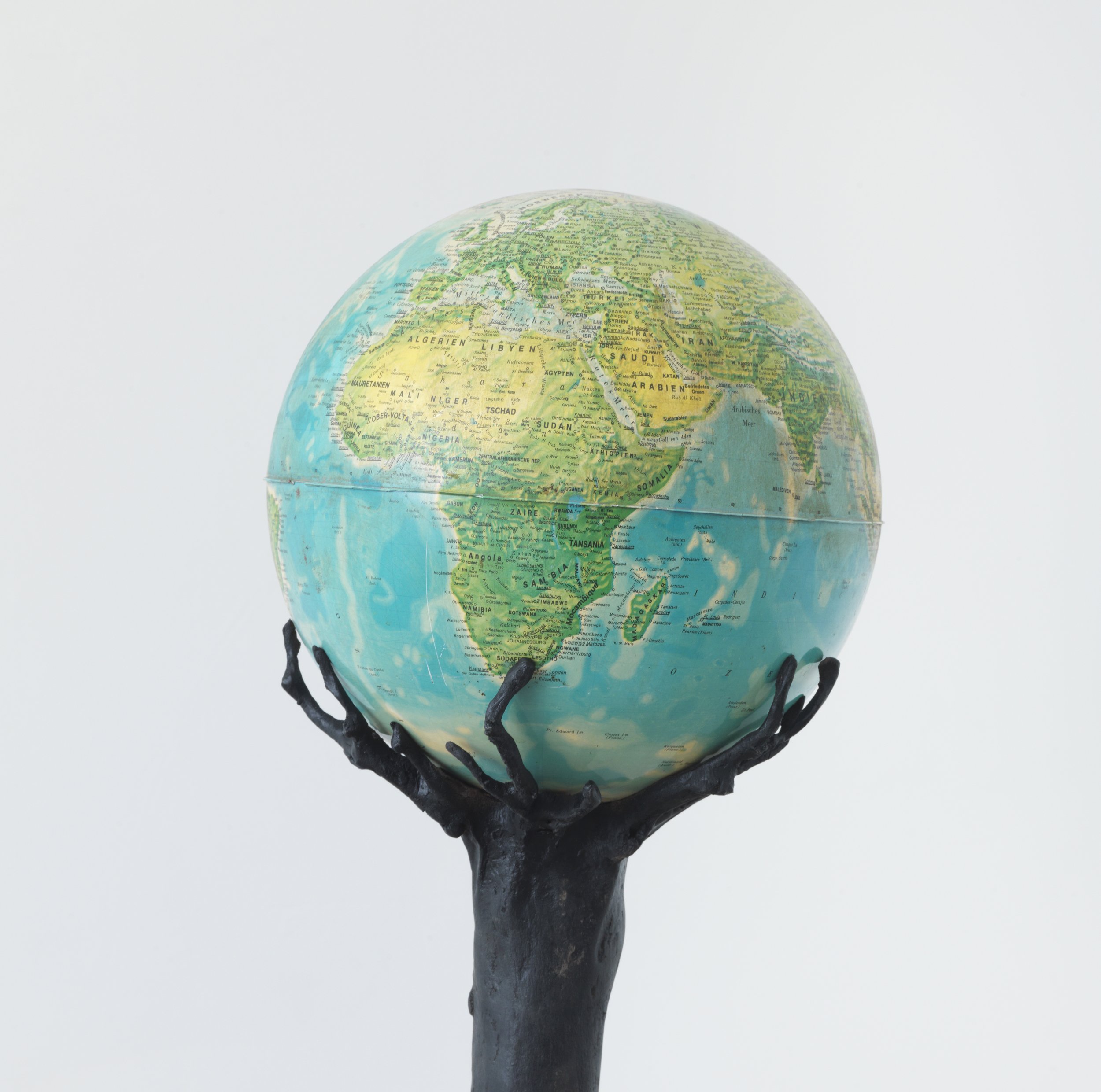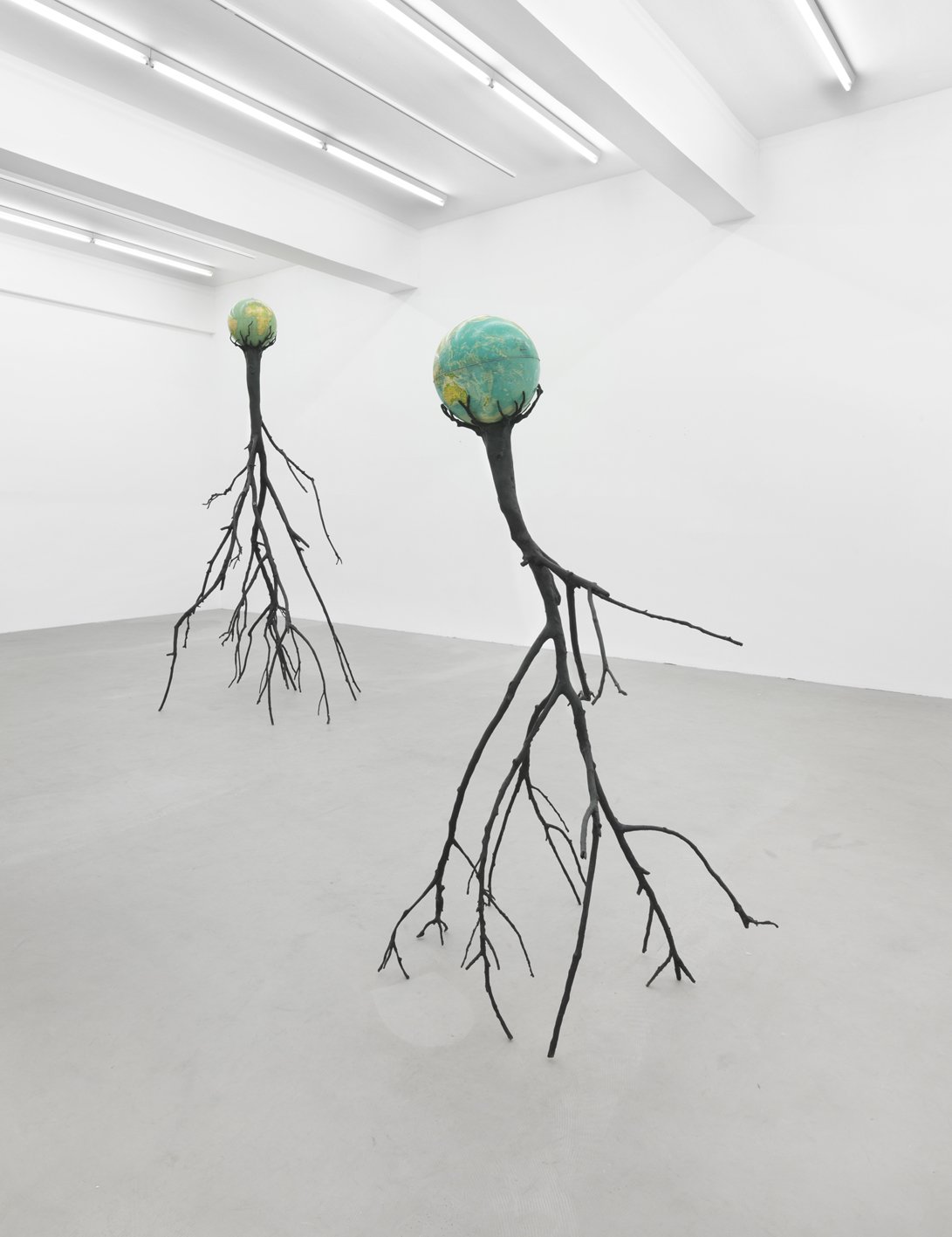
SCHLEICHER/LANGE BERLIN
KRISTOF KINTERA: NERVOUS TREES
14 June, 2014 - 26 July, 2014


-
Krištof Kintera’s installation transforms the exhibition space at SCHLEICHER/LANGE into a circuit that resembles an interactive experimental set-up for the viewer. “Nervous Trees” each consist of a substructure of branches on top of which sits a globe. The structure carries the sphere as though it were the body and the world its head. The upside-down branches are reminiscent of a system of veins or nerves in a biological organism. The installation’s individual pieces, which are up to three-and-a-half meters high, tremble at regular intervals according to a set logarithm, while the sound of the movement fills the space. It seems as though they have fallen victim to a nervous disorder, leading to their movements no longer being purposeful and keeping them on the spot, which makes it look as though they are performing a kind of dance. Through their movements, the kinetic sculptures engage in an active dialog with the beholder, communicating in a curious non-verbal language that the viewer seems unable to answer to. An emotional reaction is the only feasible option as verbal communication is impossible. Coming face to face with these otherworldly sculptural shapes, we feel a bit like Alice in Wonderland – and not least because of their proportions. Their physiognomy reminds us of evil characters from fairytales, of nightmarish, fantastic or surreal scenes in which trees are peculiarly able to walk around. Kintera draws on stereotypical scenes, key images or dream sequences that everybody is familiar with from film or literature and that have an uncanny e ect. The viewer sees the “Nervous Trees” move, but cannot anticipate the movement that should follow the first, which produces a feeling of not-knowing and of the constant danger of being agitated. Still, it’s di cult to avoid being fascinated by the playfulness the moving objects exude. The transformative moment is important in Kintera’s work. He remodels mundane or common objects or places them in new, unusual contexts, using the principle of the ready-made. Along with story-telling and the humorous aspects of his works, a second glance reveals their deeper layers of meaning, their critical facets, serious undercurrent and the questions which they raise. They are inherently ambivalent. The viewer looking at the “Nervous Trees” literally gains a different perspective onto planet earth. By breaking with ingrained viewing habits, Kintera is able to take a step back: The gap thus created provides space for reflection. The nervously twitching earth, wreathing and shivering as it sits on top of a system agonized through sensory overload, can certainly be understood as social criticism. Which is why it seems plausible to surmise that the artist calls our optimism concerning science and technology and society’s belief in progress into question. The “Nervous Trees” prompt us to think about the future of the Earth’s overly aggravated support system and in turn about the way in which we interact with our environment. Trees as “our planet’s lungs” constitute a fundamental, life-sustaining foundation which seems to have been thrown o kilter, endangering the Earth’s equilibrium in its shivering ballet. Kintera succeeds in fuelling the debate on serious topics in complex ways. His works are neither purely humorous nor exclusively serious or solely concerned with profound questions, making an individual response to his works possible on different levels.